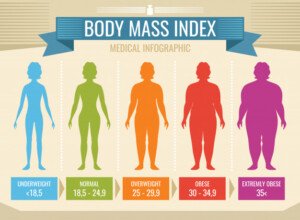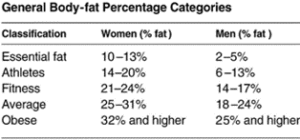Is 150 pounds too heavy or overweight for a woman?
There are variables that one must consider when wondering if a woman is too big at 150 pounds.
A woman’s body is often described as any of the following:
- Plump
- Chubby
- Husky
- Thick
- Curvy
- Overweight
- Solid
- Plus size
- Big boned
A weight of 150 pounds seems like it’s in a rather gray area, unless we’re talking about, for instance, a woman who’s five feet even vs. one who’s six feet.
“This needs context and won’t fit into a blanketed statement,” says Supriya Rao, MD, director of Medical Weight Loss at Lowell General Hospital and managing director of Integrated Gastroenterology Consultants.
Dr. Rao continues, “For example, a woman’s height, body type and frame size all play a role in determining whether or not 150 pounds is considered ‘heavy’ for her.
“Furthermore, the definition of ‘heavy’ varies from person to person, and what one woman might think is heavy may be perfectly healthy for another.”
Body Mass Index

Freepik.com/microone
Based on just the BMI, a woman’s weight of 150 may fall into the “overweight” range.
And indeed, she may very well be overweight, in that she has excess body fat.
However, BMI does not account for body composition.
Two women of the same height may weigh 150, while one wears a size 12 pants and the other wears a size 8.
The size 8 woman has a higher muscle-to-fat ratio than does the bigger woman, even though they’re the same weight.
Muscle weighs more than fat. The size 8 woman lifts hard and heavy at the gym and has a strong-looking, perhaps even sculpted or muscular physique.
But she’s not big in girth, which is why she can slip into size 8 clothing. She just has more muscle than the size 12 woman.
A woman of 150 pounds who’s 4’10 has a BMI of 31, which is class I obesity.
It’s highly unlikely that only muscle mass from intense weightlifting can account for this.
At 150 pounds and very short stature, she is heavy enough to be obese, meaning, she is too heavy from a health perspective.
This is about proportionate to a woman of 5’4 weighing 180.
A woman at 5’10 and 150 has a BMI of 21, which is in the normal range.
She’s clearly not too heavy, though she may still have a low muscle-to-fat ratio.
Waist to Height Ratio

This is more telling of excess body fat than is BMI.
- Healthy: 0.4 to 0.49
- Increased health issue risk: 0.5 to 0.59
- Higher risk: 0.6 and over.
A person with a “muscular physique” is not likely to have a big waistline.
But there are those who have a lot of muscle – but also have a lot of fat – such as an Olympic shot-putter or weightlifter.
Their fat will drive up the number for the waist-to-height ratio.
In general, a short woman at 150 pounds will have a higher number than will a tall woman, simply because 150 pounds on, say, a 5’1 woman is more likely to be from more excess fat than is 150 pounds on a 5’7 woman.
If a 150 pound woman has a waist-to-height ratio of at least 0.5, her weight is not in a medically desirable range.
Body Fat Percentage

Forget those handheld devices; they aren’t nearly as accurate as skin-fold measurements taken with calipers – a favorite tool of personal trainers.
You just can’t go wrong with skin-fold measurements. The more sites that are measured, the more accurate will be the body fat percentage.
This is why, when I was a personal trainer, I took measurements from five sites: lower abdomen, side of waist, mid-chest, back of upper arm and mid-thigh.
For women around 150 pounds, the body fat percentage was higher for shorter women.
I never had a short, 150 pound female client who had a high degree of muscle development.
A body fat percentage of 21-24% is in the “fitness” range. And 32%+ is obese.
Conclusion
Depending on the just-discussed variables, 150 pounds can be heavy for a woman. Or, it can be on the thin side if she’s tall enough.
“Being healthy is more than having a certain weight,” says Dr. Rao.
“Strive to focus on overall wellbeing, including physical, mental and emotional health.
“And remember to be kind to yourself — no matter what the scale says!
“No two people’s bodies are the same, and everyone is unique in their way.”
How to Be Kind to Your Body
- Don’t smoke.
- Women should have no more than four ounces a day of alcohol.
- Avoid illegal drugs.
- Keep hydrated.
- Keep sodium intake to below 2,000 mg/day on average.
- Limit heavily processed foods.
- Do both aerobic exercise and strength training.
- Take up martial arts.
- If you’re underweight, work on adding muscle.
- If you’re overweight, work on losing fat so that your waist to height ratio is in a healthy range of 0.4-0.49, and your body fat percentage is below 32%, preferably 21-24%.
 Dr. Rao is board certified in internal medicine, gastroenterology, obesity medicine and lifestyle medicine. She is managing director of Integrated Gastroenterology Consultants, and director of Medical Weight Loss at Lowell General Hospital. She also runs the motility program, which focuses on disorders of the esophagus, irritable bowel syndrome and anorectal disorders.
Dr. Rao is board certified in internal medicine, gastroenterology, obesity medicine and lifestyle medicine. She is managing director of Integrated Gastroenterology Consultants, and director of Medical Weight Loss at Lowell General Hospital. She also runs the motility program, which focuses on disorders of the esophagus, irritable bowel syndrome and anorectal disorders.
 Lorra Garrick is a former personal trainer certified through the American Council on Exercise. At Bally Total Fitness she trained women and men of all ages for fat loss, muscle building, fitness and improved health.
Lorra Garrick is a former personal trainer certified through the American Council on Exercise. At Bally Total Fitness she trained women and men of all ages for fat loss, muscle building, fitness and improved health.
.



























